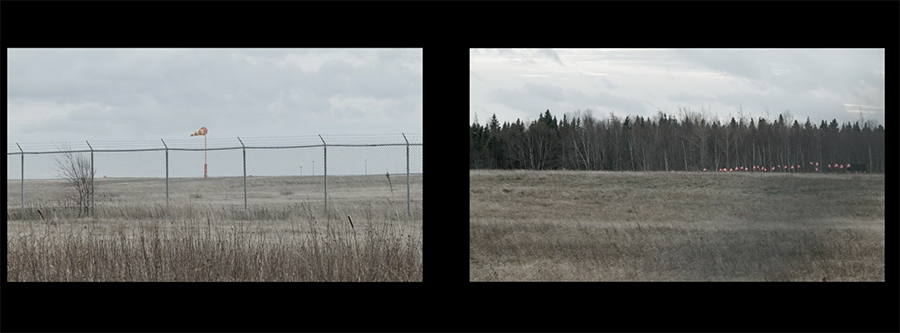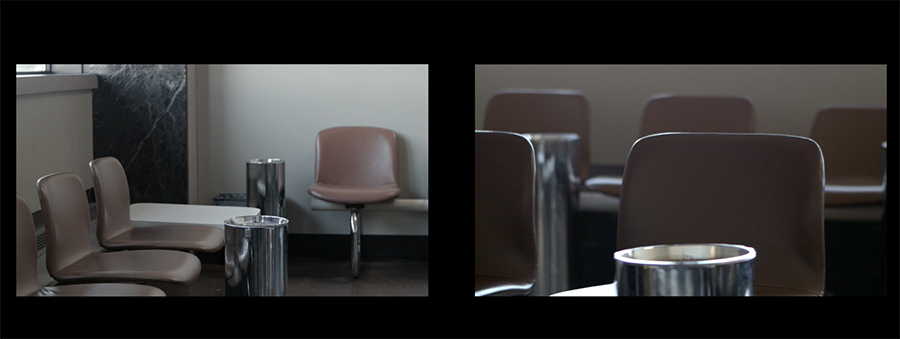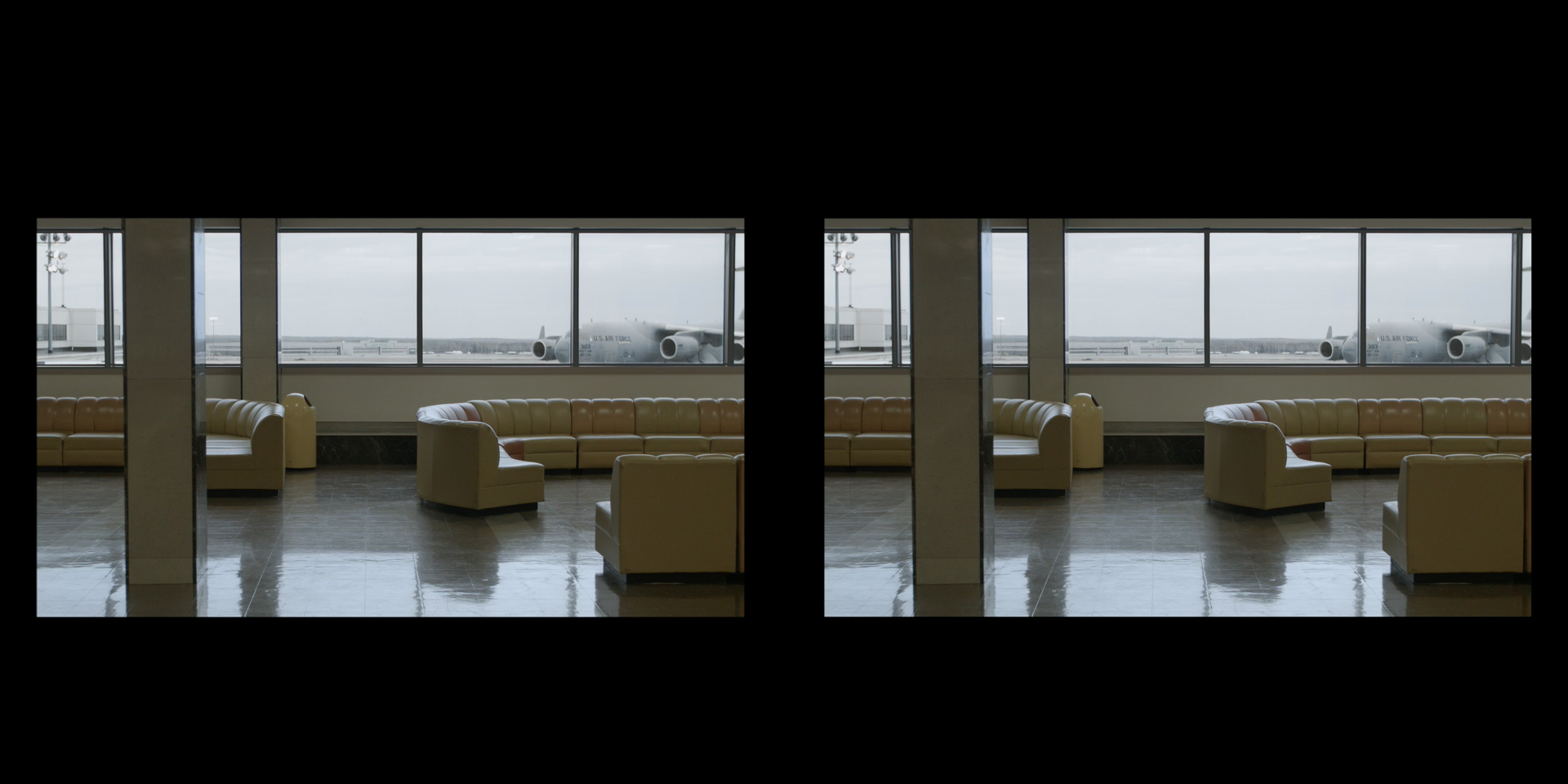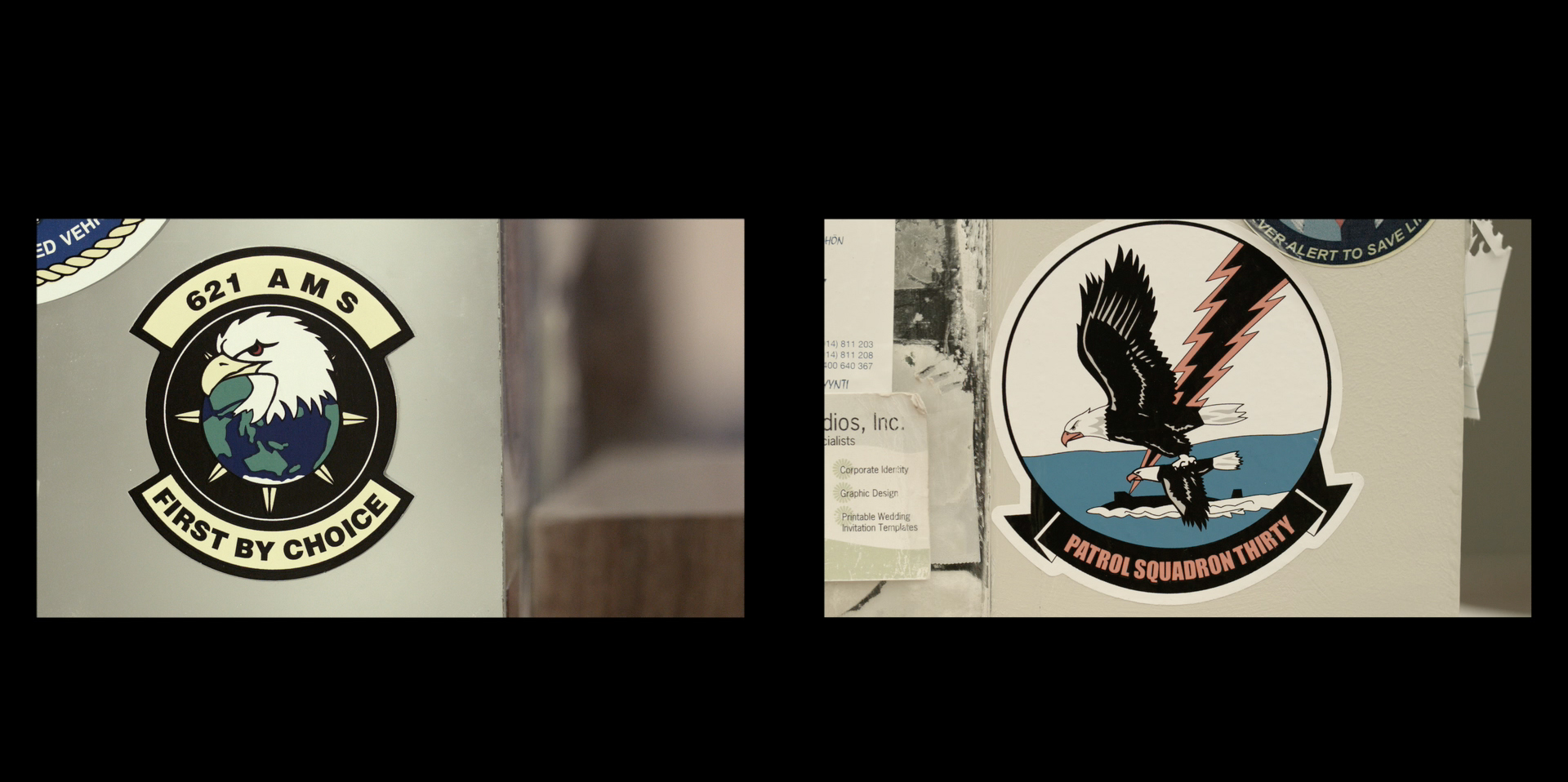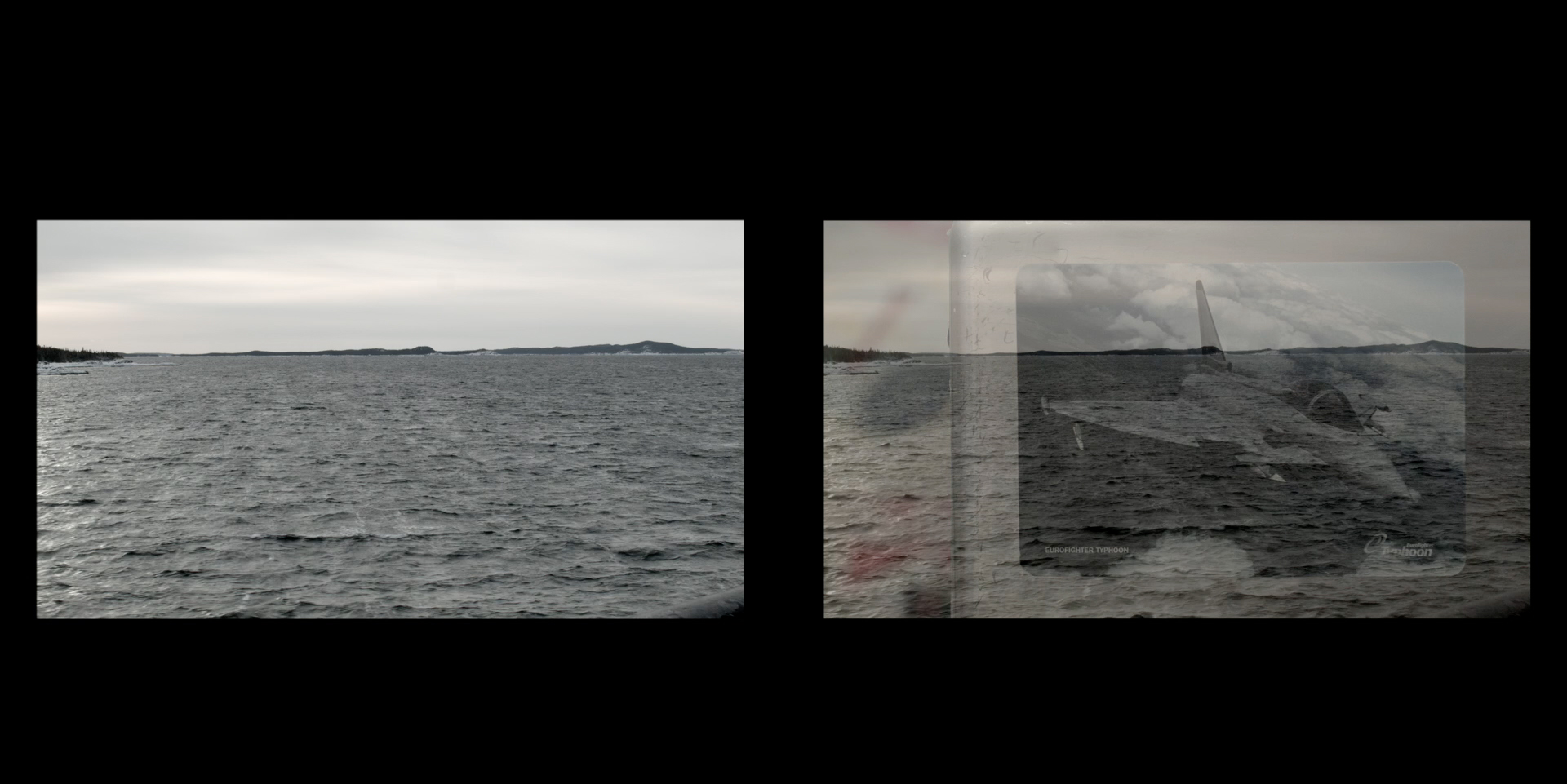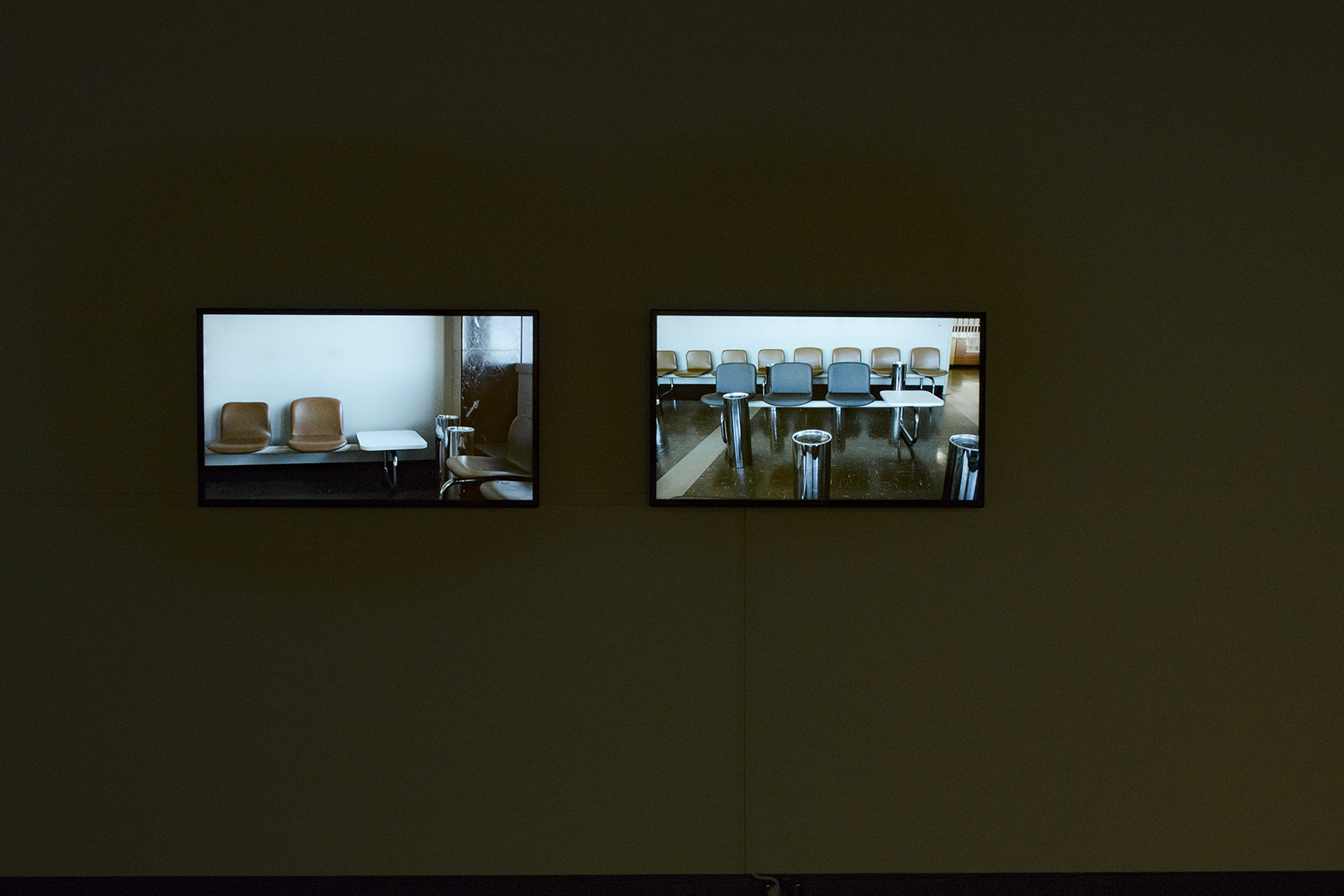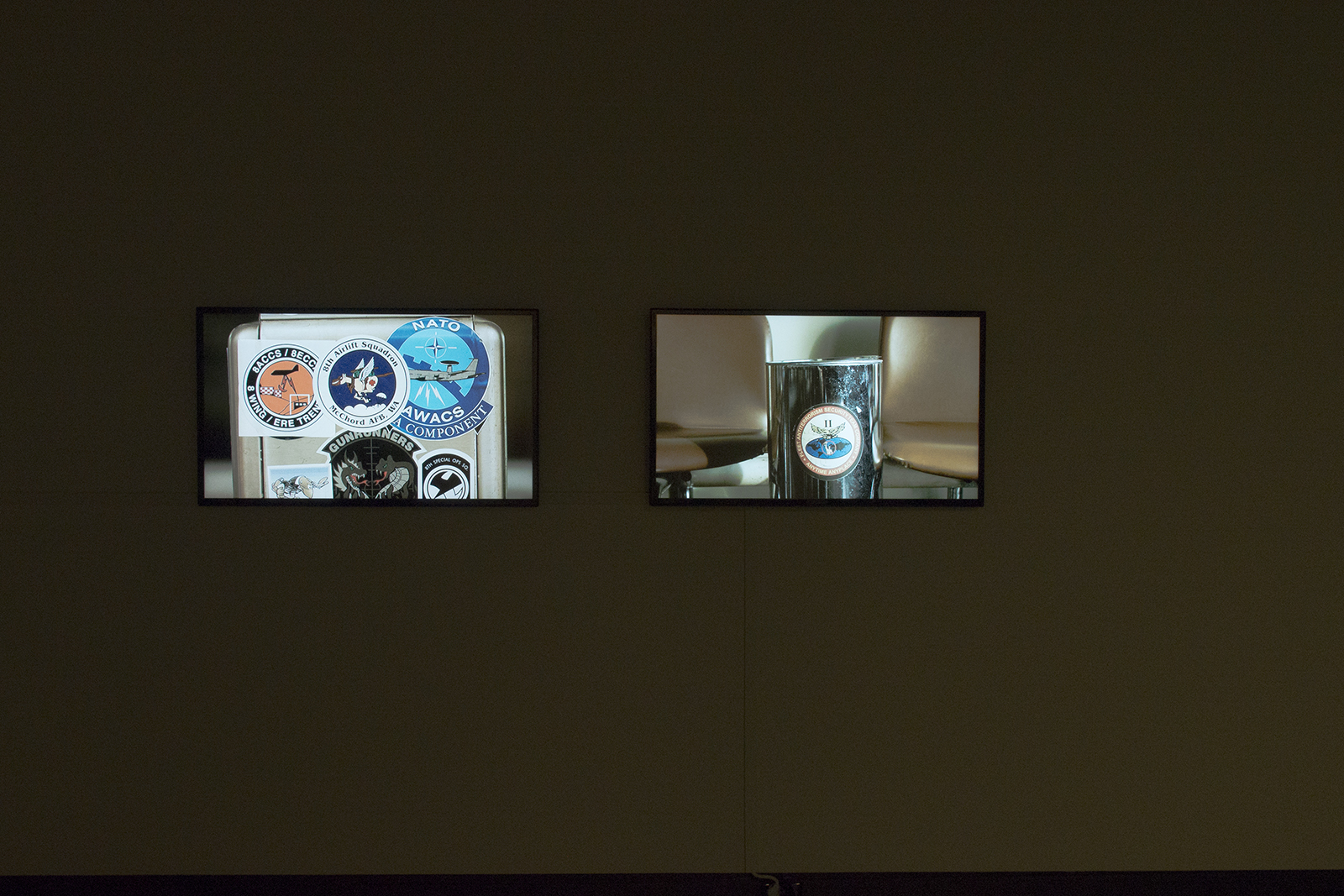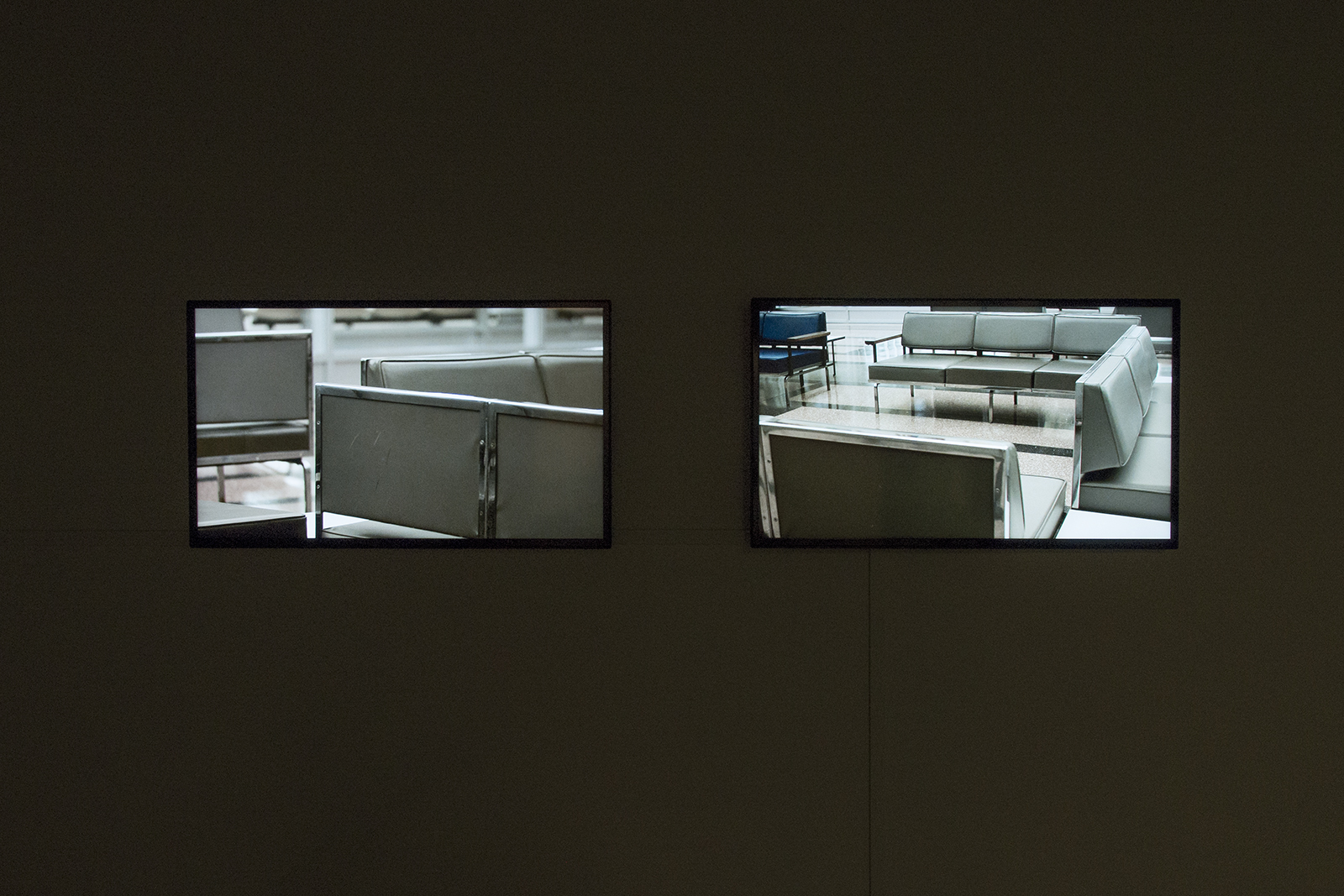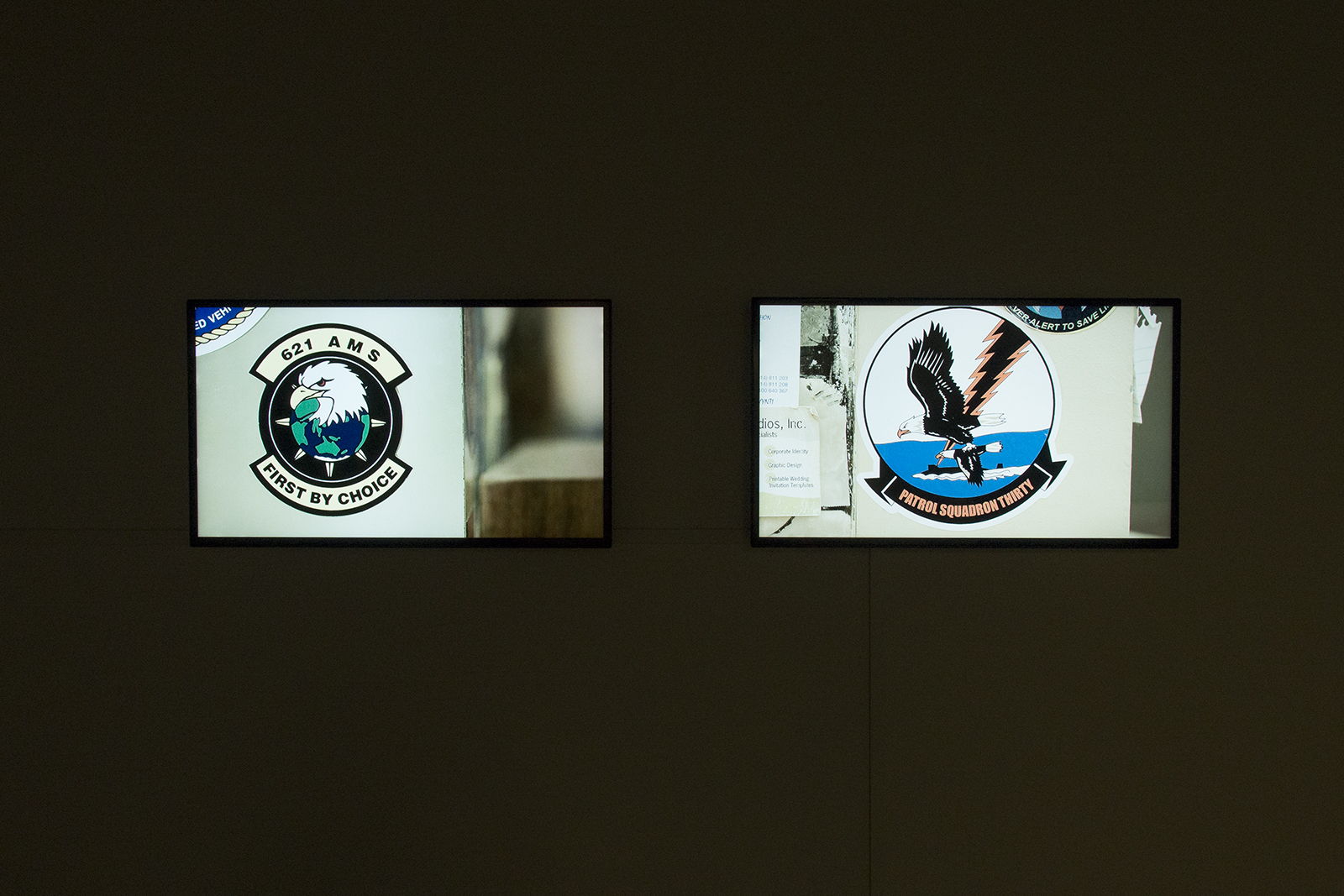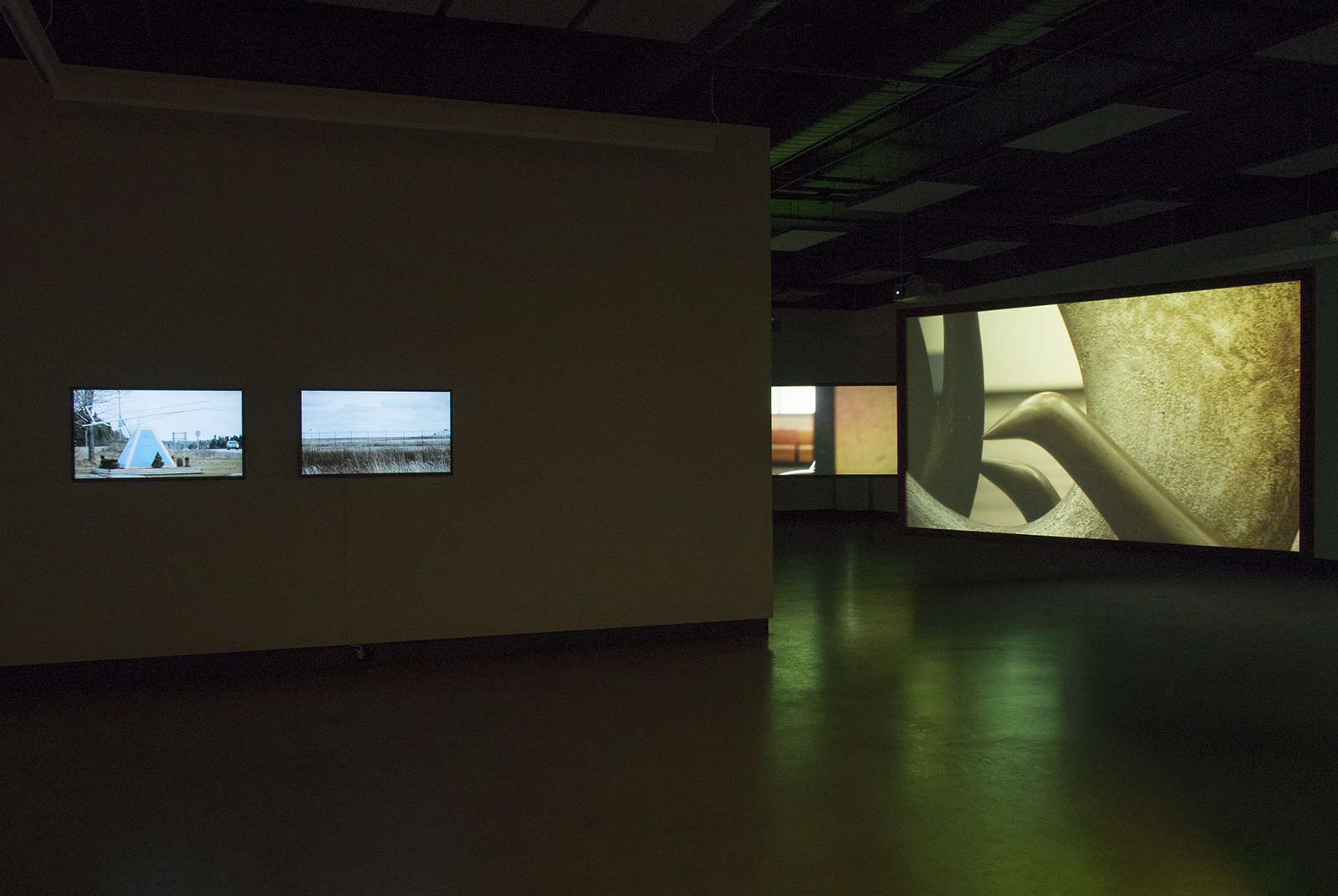The new suite of works Gander-Islands is composed of three pieces: a single channel video, Island, Lyle, a diptych and a triptych Gander Terminal. Those videos were made recently in Newfoundland in the context of an exploration of two outstanding places with modernist and contemporary architectures in relatively isolated places and close to a pregnant nature, namely the international lounge of Gander Airport and the studios of Fogo Island Arts. The video works trace a dialogue between the Fogo studios and the airport by reflecting the geometric forms, isolation and international connections within the scope of modern architecture.
Situated at four hours drive from St-John’s in Central Newfoundland, Gander Airport had played a vital role from 1940s as a refueling stop for transatlantic flights. With the advent of jets with longer range in the 1960s most flights no longer needed to refuel. Gander has decreased in importance. During the Cold War, Gander was notable for the number of persons from the former Warsaw Pact nations who defected there. It was one of the few refueling points where airplanes could stop en route from Eastern Europe or the Soviet Union to Cuba. Intended to present a progressive image of Canada, the historical international lounge was built in the late fifties with furniture by influential designers of the time: chairs by Ray and Charles Eames, Robin Bush, a mural commissioned to the Canadian painter Kenneth Lochhead, a sculpture by Arthur Price, a terrazzo floor reminiscent of Mondrian’s paintings. Today, the imposing lounge of the international zone stand still, almost unoccupied except by US air force and dignitaries and their private jets. Gander Airport stands out for the design it houses, giving the impression of an oversized museum from a past era.
The diptych presents alternate shots of the lounge and a smokers’ room. During the filming, deposited on the floor, a bottle barely started with a greenish drink, with an Arabic writing label – recalling the use of the place by American soldiers in transit to or from an oversea mission. This discrete presence hovers the lounge that we saw in the triptych. It is punctuated by stickers of various tactical forces placed here and there in the terminal. The two images that run in synchronicity are close to a drift, a reverie, a second state of a hypothetical occupant.
